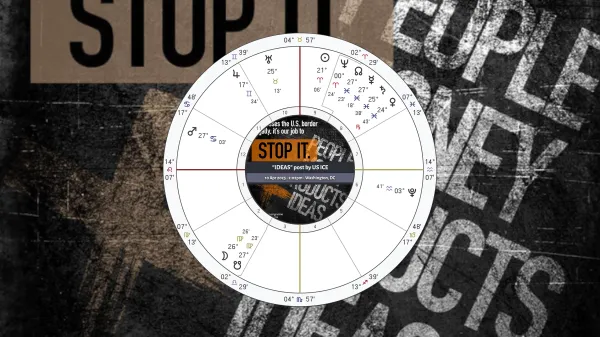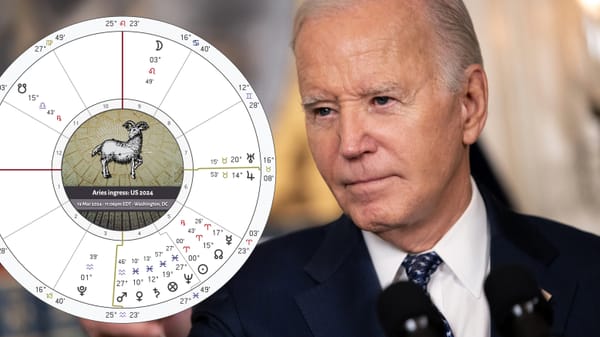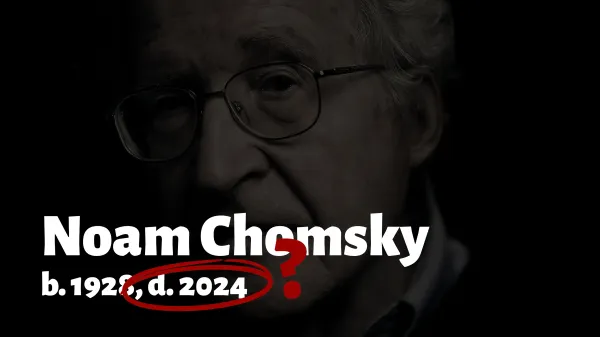Venezuela's fight for Guyana Esequiba
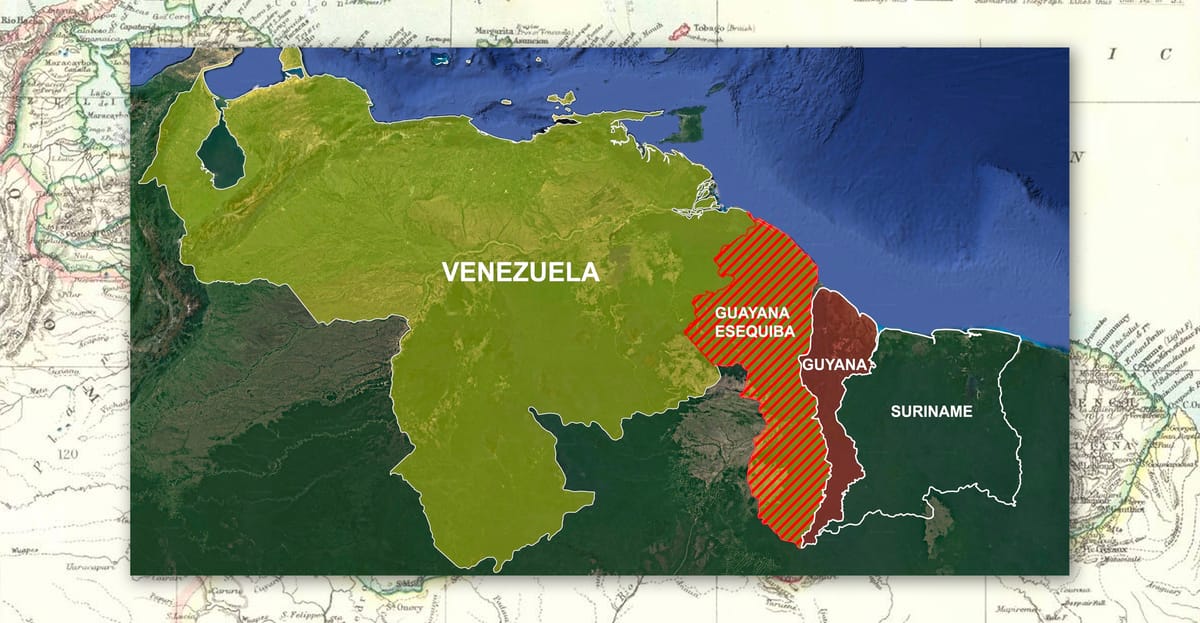
On Sunday, Venezuela held a referendum where the voters rejected the jurisdiction of the International Court of Justice (ICJ) in its attempts to arbitrate a longstanding territorial dispute with Guyana. [1]
This move was a bold statement of national sovereignty and a strategic play for the future. The referendum (which passed with 95% approval) backed the creation of a new state in the Esequibo region, an area not only rich in biodiversity but also in potential oil and gas reserves.
This decision has far-reaching implications, not just for Venezuela and Guyana, but for the regional balance of power and the future of international dispute resolution. As Venezuela reasserts its claim on this resource-rich territory, the dynamics in this part of the world take a critical turn. Eyes are now turned the Venezuela's presidential election, expected in December 2024. With political opponents rising to challenge President Nicolás Maduro's deeply unpopular government, Sunday's referendum was an important show of strength for Maduro and an opportunity to rally nationalist sentiment amongst the voting masses.
This article will outline the history of the territorial conflict and the astrological configurations that attended important developments, and include a forward look at relevant astrology.
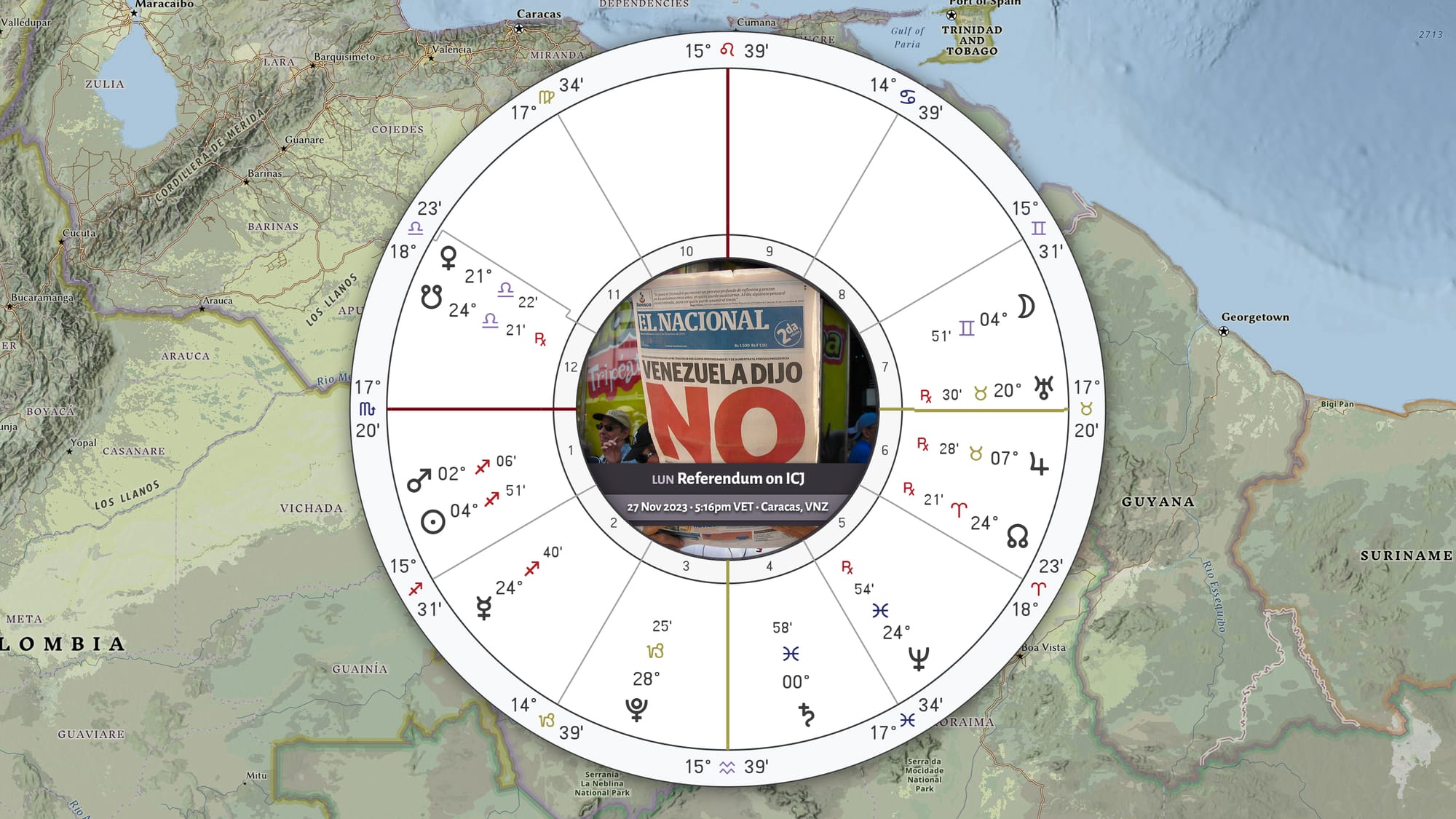
When the Sun and Moon oppose each other in the sky, the resulting full Moon brings themes of contention into focus. Just as the Sun fully exposes and illuminates the face of the Moon, on earth, buried conflicts surface and hidden motives are revealed.
The referendum in Venezuela was held on Sunday, 3 December after a full Moon in Gemini. Its position pulled in themes related to foreign relations (9th-ruler) and adversaries (7th house). This lunation fell in Mercury's sign (4° Gemini), and Mercury’s condition here may point to instability in Venezuela’s resource positioning within the world economy, or as we’re discussing here, shaky territorial claims.
Mars and Saturn are close in aspect to this full Moon (Saturn by square, and Mars by conjunction to the Sun and opposition to the Moon). Mars is well-known for its tendency to bring new blood into old conflicts. Saturn has associations with oil and mineral reserves deep within the earth – of direct relevancy to the referendum. Saturn is placed in the 4th house which reinforces those themes.
Setting the stage for the current dispute
European exploration and colonization sets the backdrop to the contemporary territorial disputes between Venezuela and Guyana. In 1498, Christopher Columbus arrived in what we now call Venezuela. The initial European endeavors in this region focused on pearl fishing and enslaving the indigenous population. The quest for El Dorado, a mythical city of gold, lured adventurers deeper into the Venezuelan interior. By the latter half of the 16th century, the Spanish had established a more permanent footprint, founding cities like Caracas and cultivating crops such as corn, sugar, and tobacco. Competing colonizing forces, particularly the Dutch, encroached on Venezuela's commercial interests until Spain responded with a trading monopoly in the region, though this was later dismantled. [2] Venezuela gained full independence from Spain in the early 19th century.
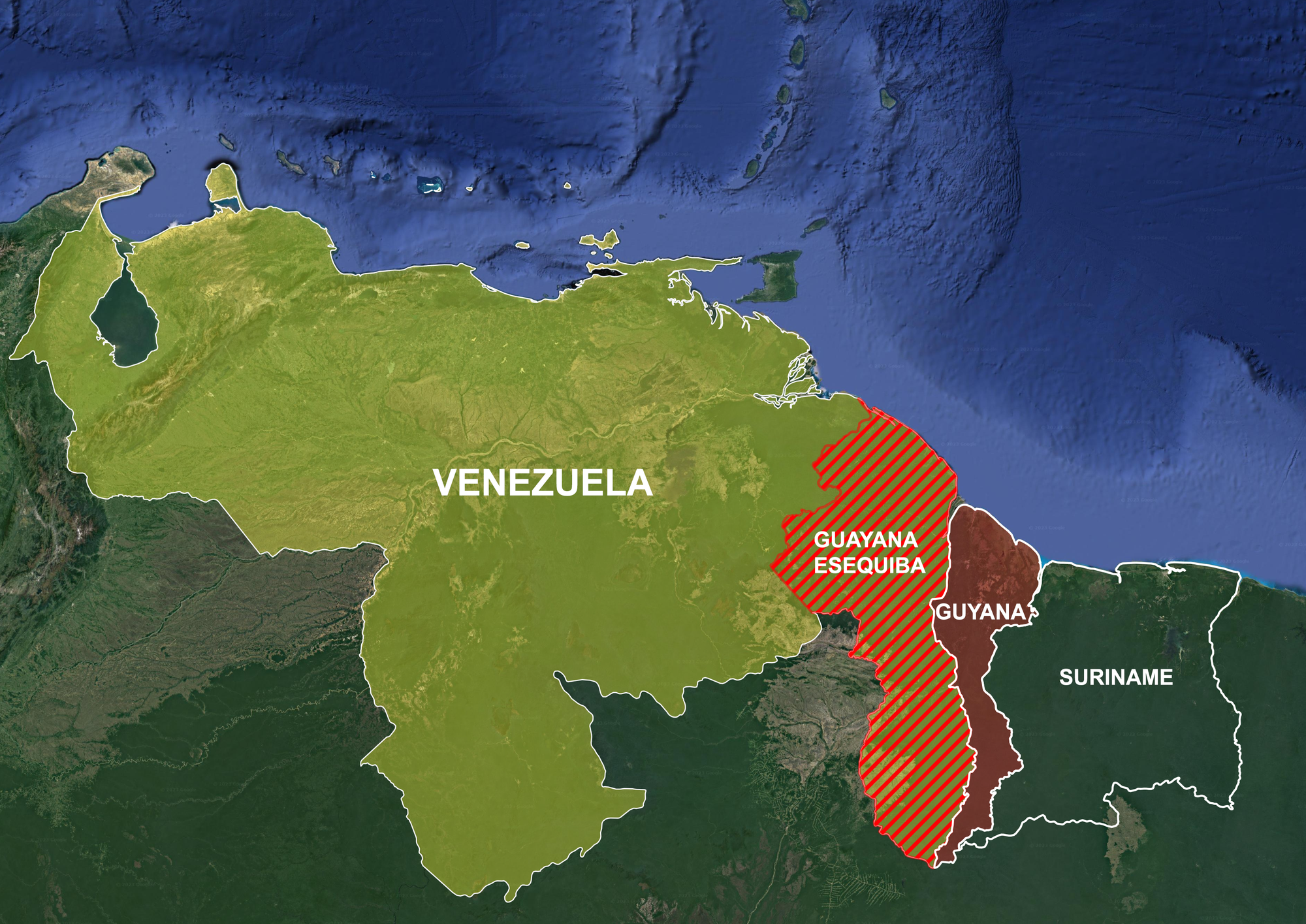
In Guyana, the Dutch were the first European colonizers to establish a lasting presence, beginning with a trading post on the Essequibo River in 1616. The Dutch objectives evolved from trade to territory acquisition as European colonialism intensified. To drive agricultural productivity in the Dutch colonies, colonizing powers resolved to import of enslaved Africans.
The British entry into Guyana in the mid-18th century, attracted by fertile land and a lucrative plantation economy, would eventually shift influence away from the Dutch. Toward the end of the late 18th century, the British effectively controlled the internal affairs of Demerara, one of Guyana's Dutch colonies. The geopolitical chessboard was upended by the French Revolution and Napoleonic Wars, leading to a temporary return of Dutch control. By 1814, at the London Convention, Britain formally acquired Guyana, which would remain under British control until its independence in 1966. [3]
An independent Venezuela inherited Spanish claims to (what is now called) the Guyana Esequiba region. Britain claimed this territory too, under the banner of British Guiana. Today's territorial dispute is the colonial legacy of European interests in this region.
An early attempt to settle the dispute
In 1897, a response was coordinated to address escalating tensions between Venezuela and British Guiana over Esequiba. Venezuela, asserting claims to nearly all territories west of the Essequibo River, was supported by the United States, which pressured Great Britain for arbitration. In the Treaty of Washington, the competing powers agreed to establish an arbitration tribunal comprising judges from both Britain and Venezuela, with the decision to be deemed final and binding.
The tribunal was set up in 1898 and heard extensive arguments from both sides. On October 3, 1899, the arbitrating body ruled largely in favor of Great Britain, [4] affirming its control over most of the disputed territory west of the Essequibo River, except for specific regions like the upper Cuyuni basin and an area near the Orinoco River's mouth. This award included a 4,000 square-mile block south of the Pakaraima Mountains. The decision, originally contested by Venezuela, was later accepted, and a boundary commission demarcated the borders in line with the tribunal's ruling.
The tribunal's decision was announced following a full Moon in Pisces. The Moon was in the 3rd house of agreements and contracts, the Sun in the 9th house of foreign affairs and justice systems – fitting placements for a lunation preceding an international deliberation about land rights. But the astrology of this full Moon lacked signatures of permanence, describing the award as left open to challenges.
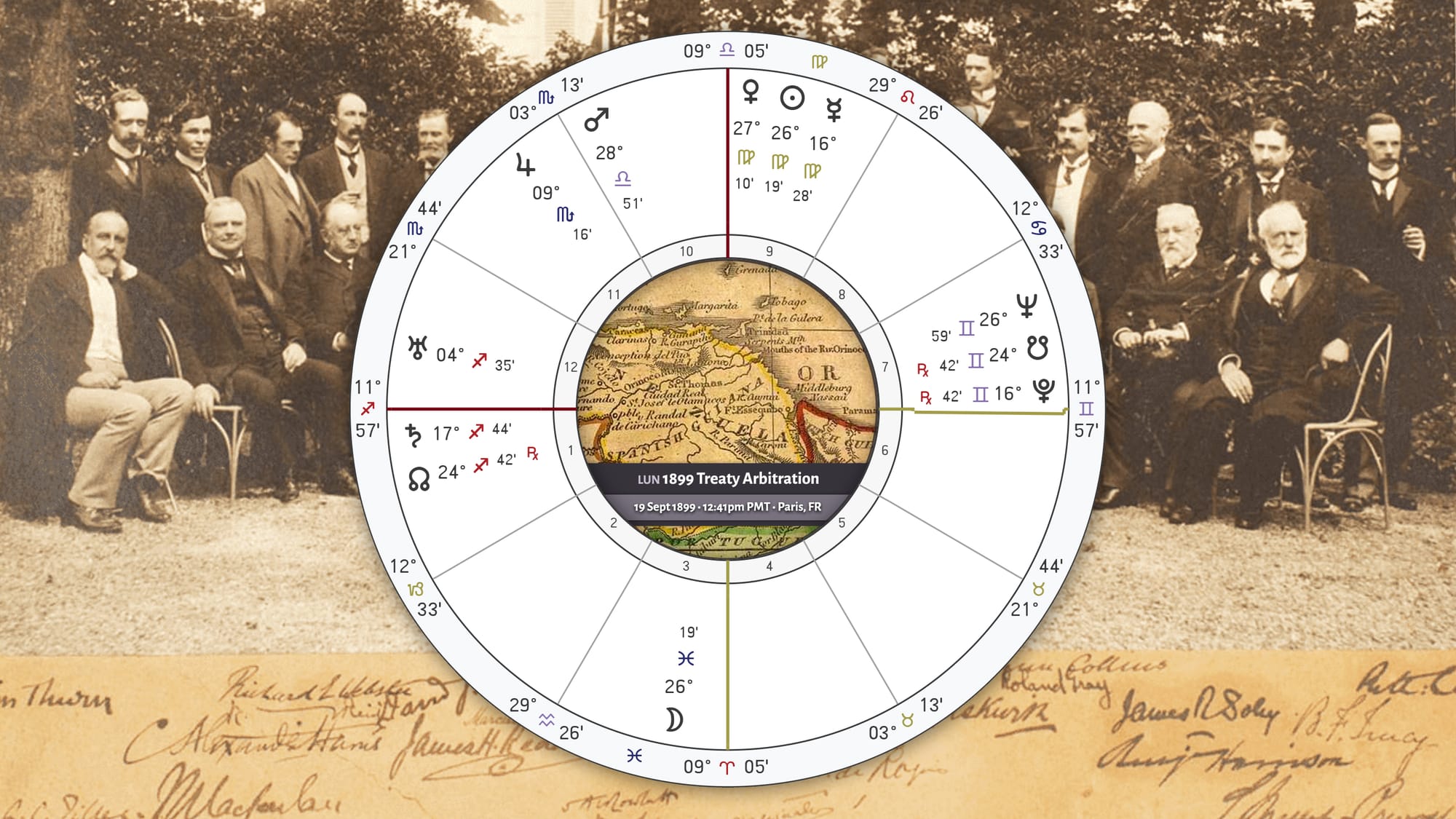
The mutable signs occupy the space between seasons:
- Pisces between winter and spring;
- Gemini between spring and summer;
- Virgo between summer and fall; and,
- Sagittarius between fall and winter.
When the Sun is passing through these signs, the weather becomes mixed and variable, almost as if it can't decide which season it belongs to. An astrological emphasis in these signs impart an unresolved, back-and-forth dynamic to whatever is done under such auspices.
This lunation carried strong signatures in all four mutable signs. The Sun was in Virgo, the Moon in Pisces. Mercury, the planet we associate with the clear and effective transmission of ideas and agreements, is in Virgo, forming a square aspect to two obstructing forces also in mutable signs: Saturn in Sagittarius, and Pluto in Gemini. The square to Saturn showed that foreign agreements were not going to be made to universal satisfaction and would be the cause of future trouble and disturbances. The square to Pluto acts as a force-multiplier to the intensity of the tenuous agreement.
The full Moon was in Jupiter's sign, Pisces. Jupiter, the planet of justice and courts, was at 9° Scorpio at the awarding of the tribunal's decision. This past Sunday, when Venezuela put forward its referendum, Jupiter was in tight opposition from 6° Taurus. This opposition is one data point that could've been used to triangulate the timing of the referendum, if eyes had been on this conflict – and future activation of these degrees can serve as one data point for future forecasting.
It's worth noting the position of Uranus in the 1899 chart: 4° Sagittarius. Uranus is a planet of discord, so it perhaps not surprising to learn that the referendum came after an exact opposition between the treaty's Uranus and the full Moon of 27 November 2023 (Moon at 4° Gemini, Sun at 4° Sagittarius).
A solution for the 20th century
Venezuela continued to challenge the tribunal's legitimacy and impartiality, leading to the necessity of an intervention: the Geneva Agreement of 1966. The Geneva Agreement was essentially an "agreement to reach an agreement," and acknowledged Venezuela's claim that the 1899 decision was null-on-arrival without explicitly supporting or disputing that claim. It mandated both parties to seek a peaceful, practical resolution while maintaining the status quo, leaving the disputed region under Guyanese authority. It also outlined appropriate and approved methods for arbitrating conflict.
On 17 February 1966, the agreement was signed between Venezuela, the United Kingdom, and British Guiana (soon to become independent Guyana). To facilitate resolution, a "Mixed Commission" comprising representatives from Venezuela and British Guiana was formed, without direct UK involvement. Initially given four years to resolve the dispute, the timeline was extended under the 1970 Port of Spain Protocol, which effectively "froze" aspects of the Geneva Agreement for twelve years. However, in 1982, Venezuela declined to further extend this protocol, which resulted in the the 1966 agreement being reinstated.
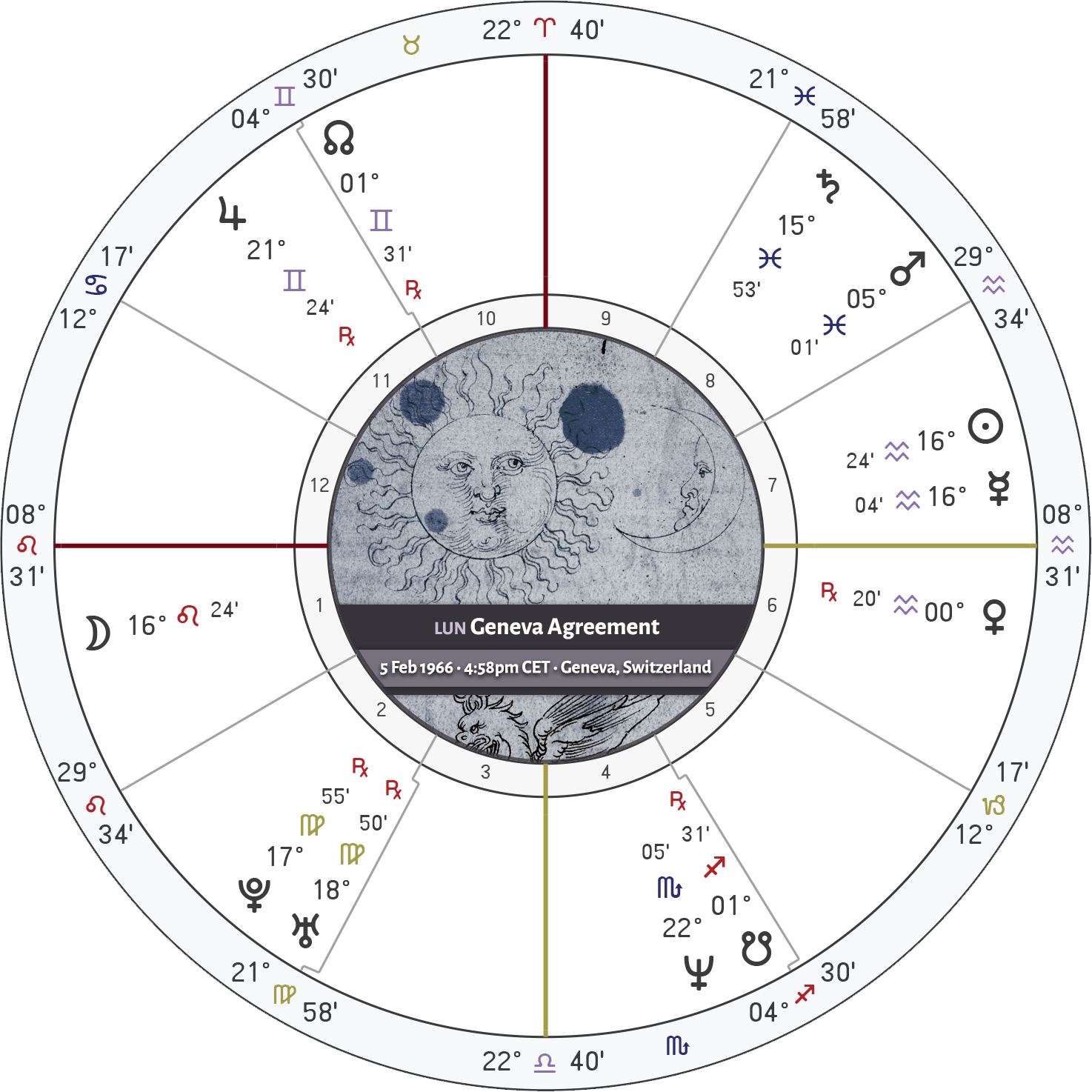
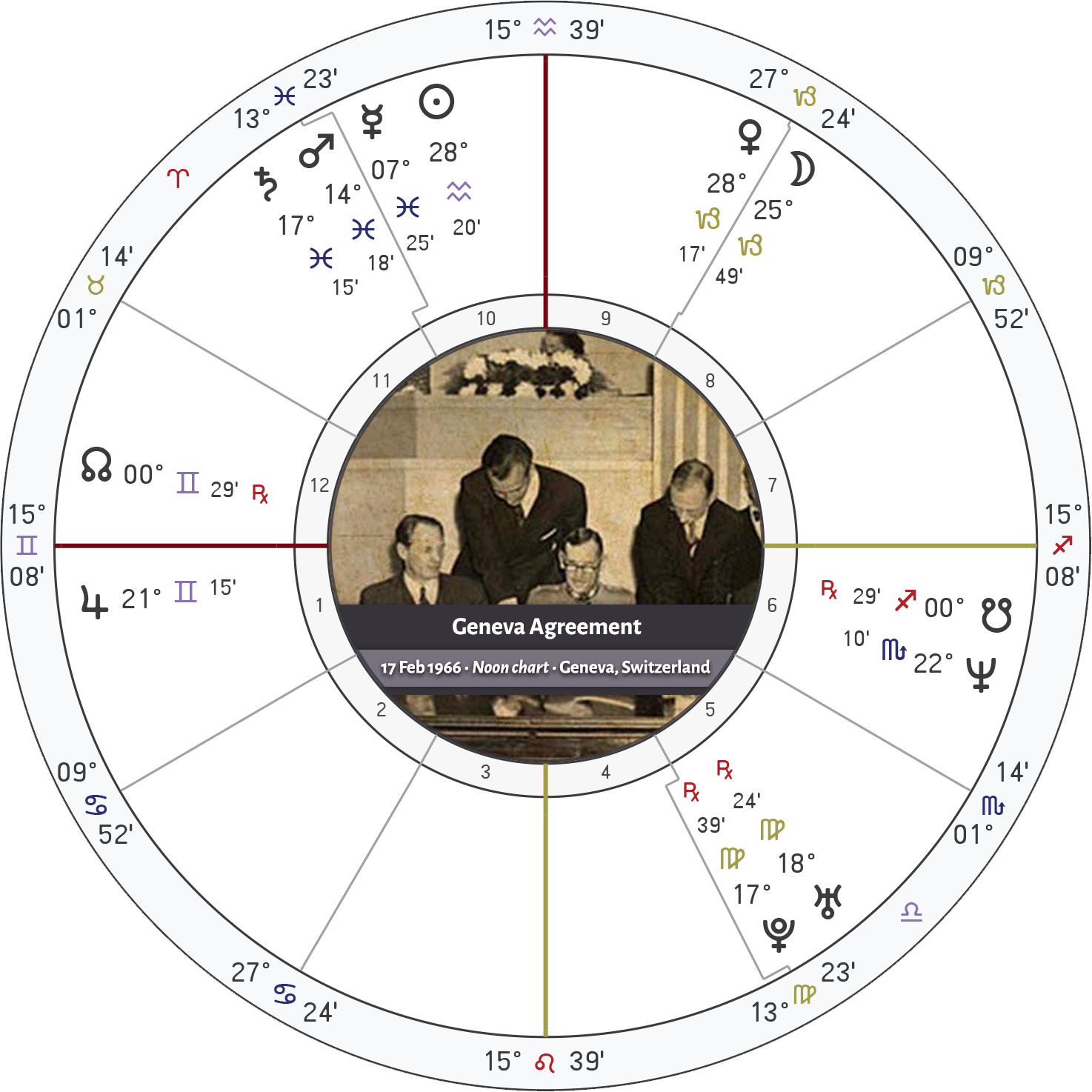
Lunation prior to the Geneva Agreement, and a noon chart for the date of signing
Above are two charts, one for the full Moon which preceded the Geneva Agreement's signing (5 February 1966), and one for the day that it was signed (17 February 1966; set for noon, exact time of signing not known). Again we have a chart that places a great deal of emphasis on the mutable signs, suggesting this agreement wouldn't hold indefinitely.
On the day of signing, Mars and Saturn were coming into conjunction in the middle of Pisces. This conjunction is a meeting of two powerful and often antagonistic forces, and things seeded on this signature eventually bloom with renewed conflict and struggle. This aspect didn't form in isolation: as it became exact, it did so in direct opposition to a signature of combustibility (a Uranus/Pluto conjunction in Virgo). Mercury applies to this configuration from Pisces, weakening prospects that an agreement made at this time would be respected and accepted.
Bringing us to the 21st century
In 2018, Venezuelan President Nicolás Maduro reaffirmed its claim to Esequiba and the nullity of the 1899 treaty as outlined in the Geneva Agreement. That same year, Guyana filed a case at the ICJ (also called the World Court) seeking confirmation of the validity and binding effect of the 1899 decision. [5] This was a significant escalation, indicating Guyana's commitment to legally solidify its borders.
After accepting arguments from all relevant parties, the World Court ruled that it indeed had jurisdiction to hear the case in December 2020. [6] While this was a notable victory for Guyana, it also established precedent in international law, affirming the ICJ's role in resolving territorial disputes between sovereign nations.
This December 2020 ruling – that the ICJ could arbitrate the issue – is the decision that last Sunday's referendum challenged.
Venezuela's upcoming election
The referendum has been perceived as a strategic move by President Nicolás Maduro to bolster nationalist sentiment ahead of the 2024 presidential election, to demonstrate the current regime's strength and consolidate support. Discontent with the current administration makes Maduro unlikely to win against a unified opposition. Security analyst Rocio San Miguel suggests that by stirring up conflict, Maduro may be seeking to create conditions that could justify postponing the election. [7]
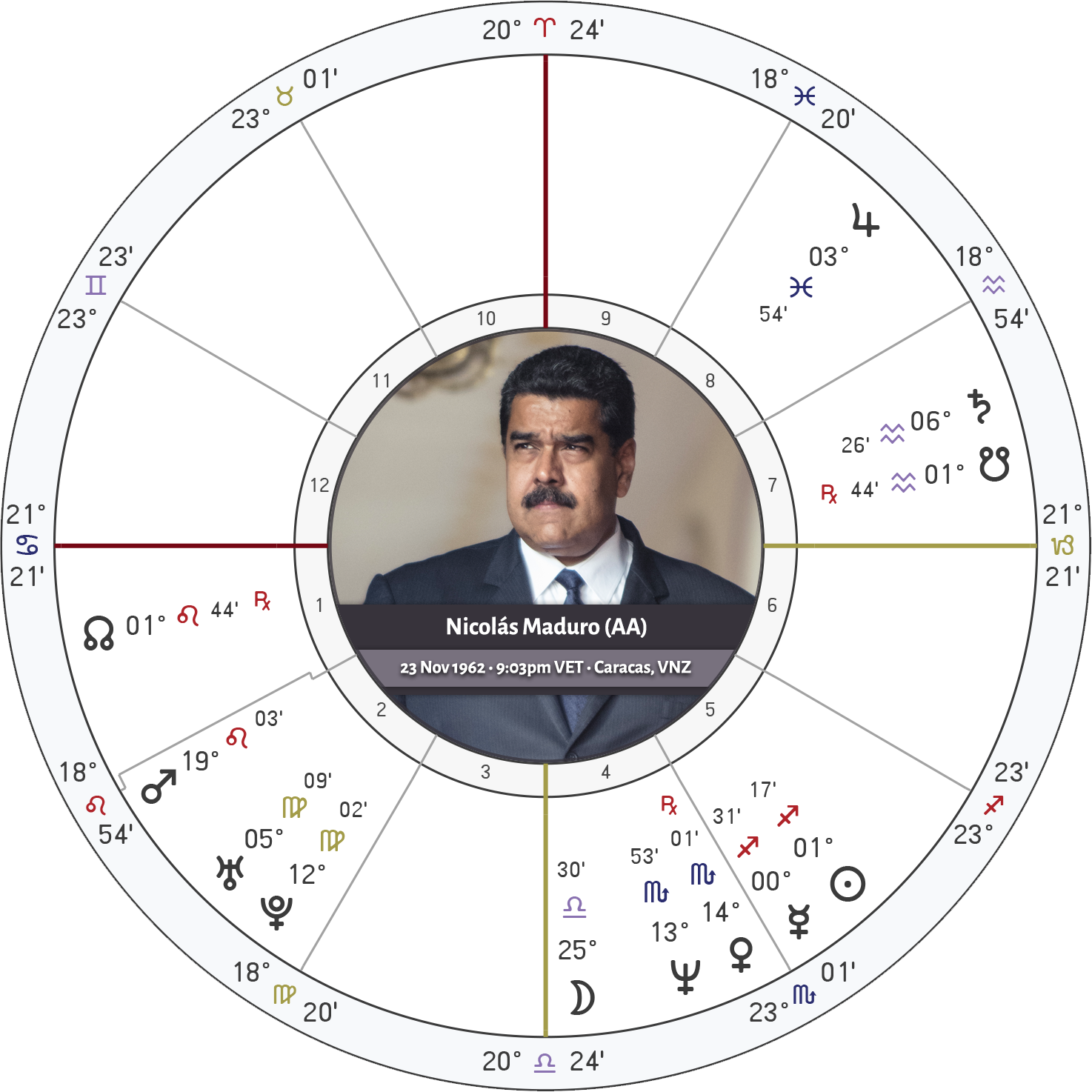
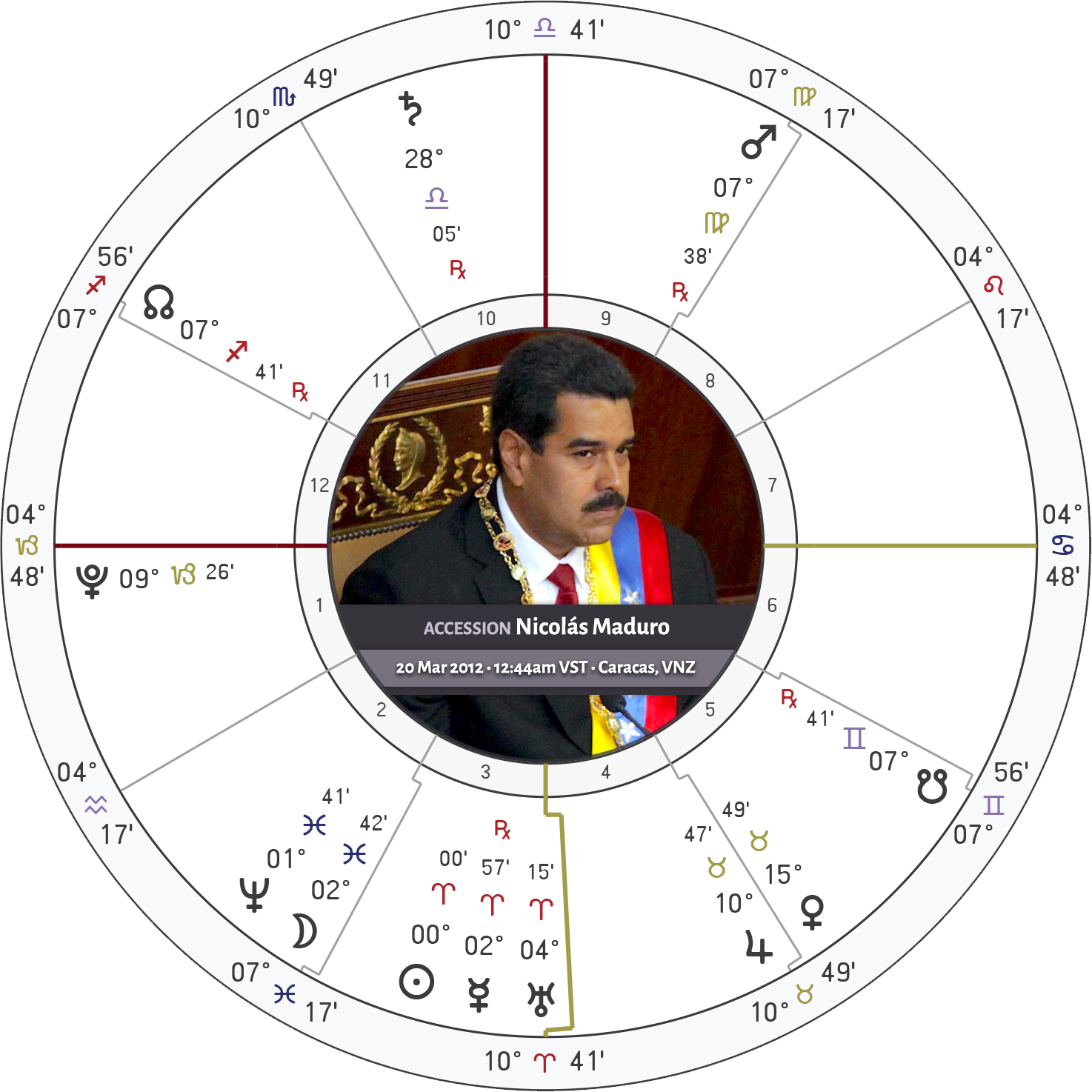
Left: Maduro's birth chart; Right: the chart for Maduro's accession to the presidency
Maduro has some challenging astrology ahead. Saturn is currently transiting over his natal Jupiter/Uranus opposition. Saturn is a slow and exacting planet, and tends to suppress optimism and advantage when transiting over one's natal Jupiter. Further, Pluto is preparing to move over his natal Saturn, an aspect that will give strength, intensity and focus to his personal and professional enemies.
The chart for Maduro's presidency (above right) is equally exposed to tough transits that lie ahead. For the next few months, Saturn will be transiting the administration's Moon/Mars opposition. That opposition falls in houses related to agreements with foreign nations, and Saturn represents a metaphorical tightening of the screws: shows of strength in the international arena are likely to be met with strong consequences.
In 1966, the Geneva Agreement was signed when Mars and Saturn were coming into conjunction in the middle degrees of Pisces. Every 30 years, these two will conjoin in Pisces – and the next union in Pisces is just ahead, in April 2024.
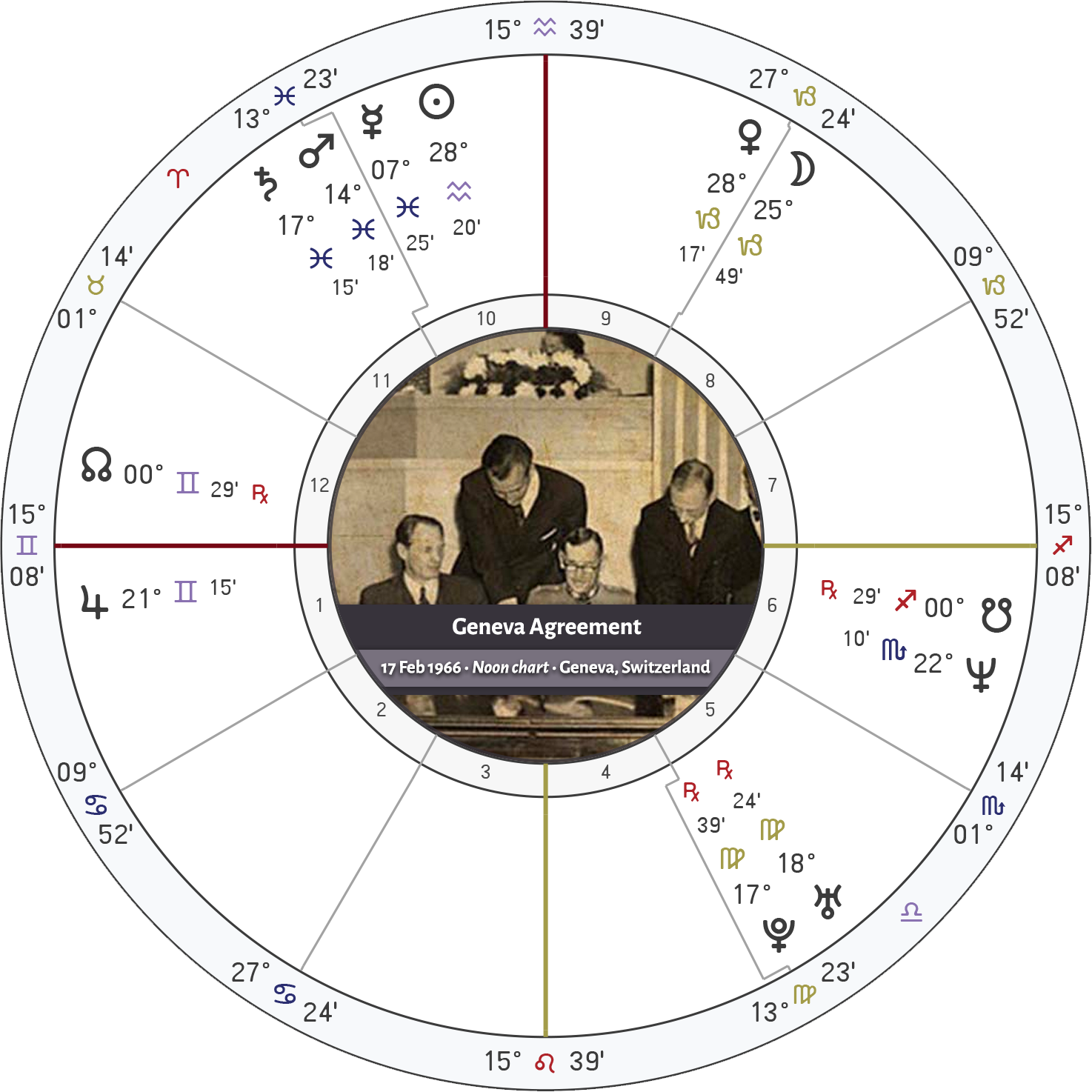
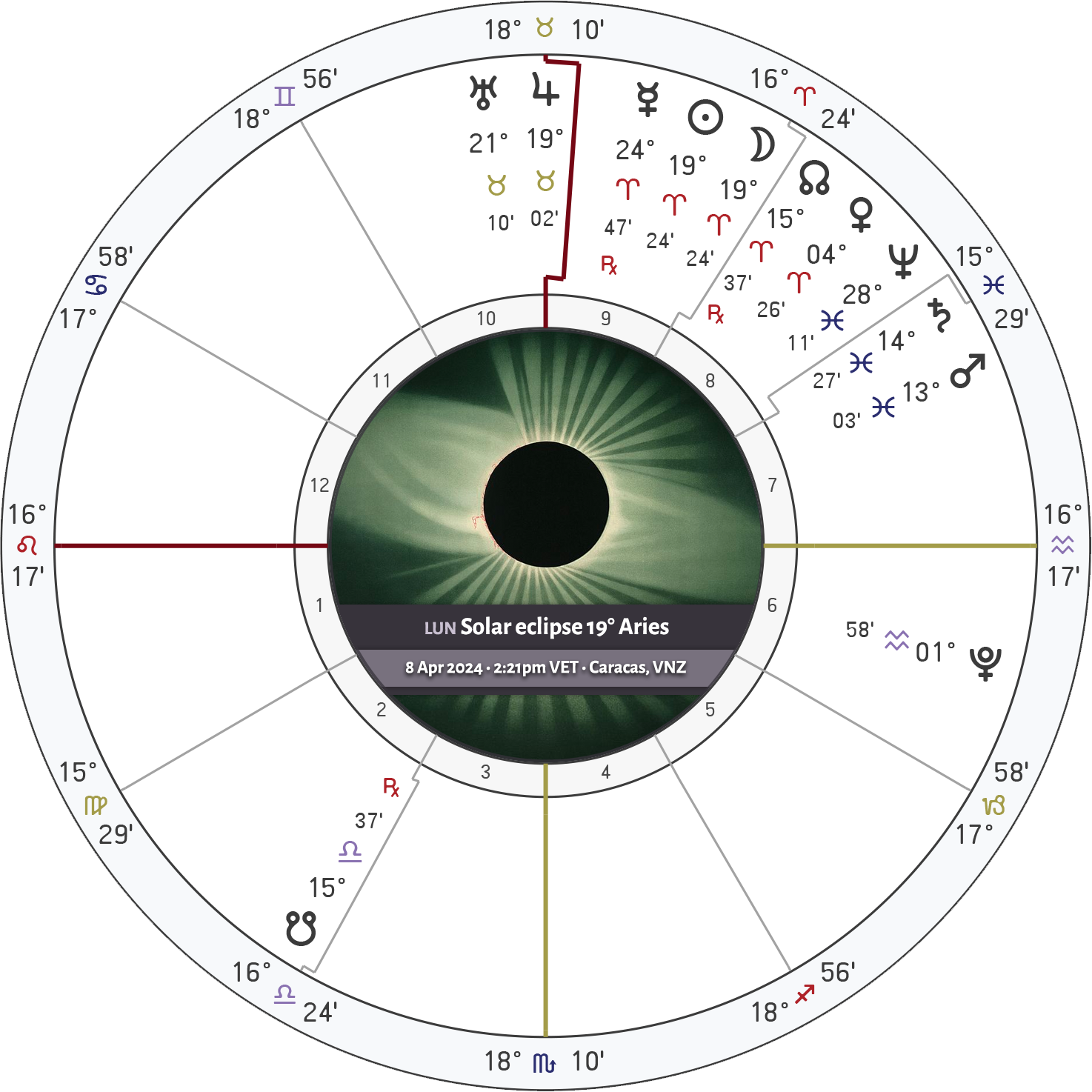
Left: signing of Geneva Agreement (noon chart); Right: solar eclipse of 8 April 2024
The unhappy conjunction follows a solar eclipse at 19° Aries. The Sun has natural association with leaders of nations and people in eminent positions, and an eclipse of the Sun's light is analogous to the sudden fall or decline of a world leader. Many world leaders will be effected by this eclipse, but Maduro is one of those singled out, as it falls upon his natal midheaven, or house of professional career and standing.
I would expect the temperature to be turned up again in August 2024, when tough interplay between Mars and Saturn resumes. In August, Mars will come to a conjunction with Jupiter, which has an exaggerating effect on Mars, and both will be in square to a retrograde Saturn in the middle degrees of Pisces.
Venezuela's presidential election is slated for the second half of 2024, with the elected president's six-year term set to begin on January 10, 2025.
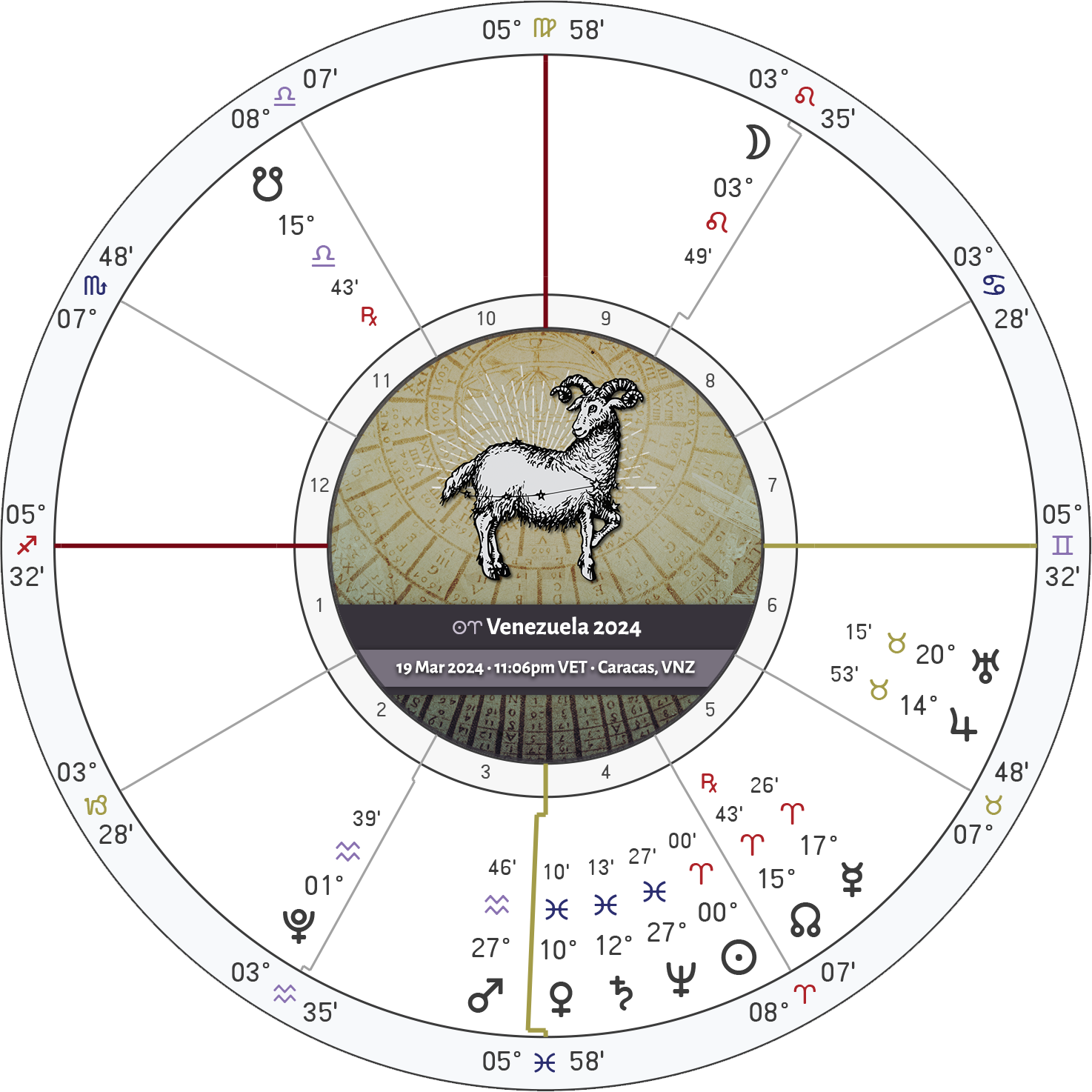
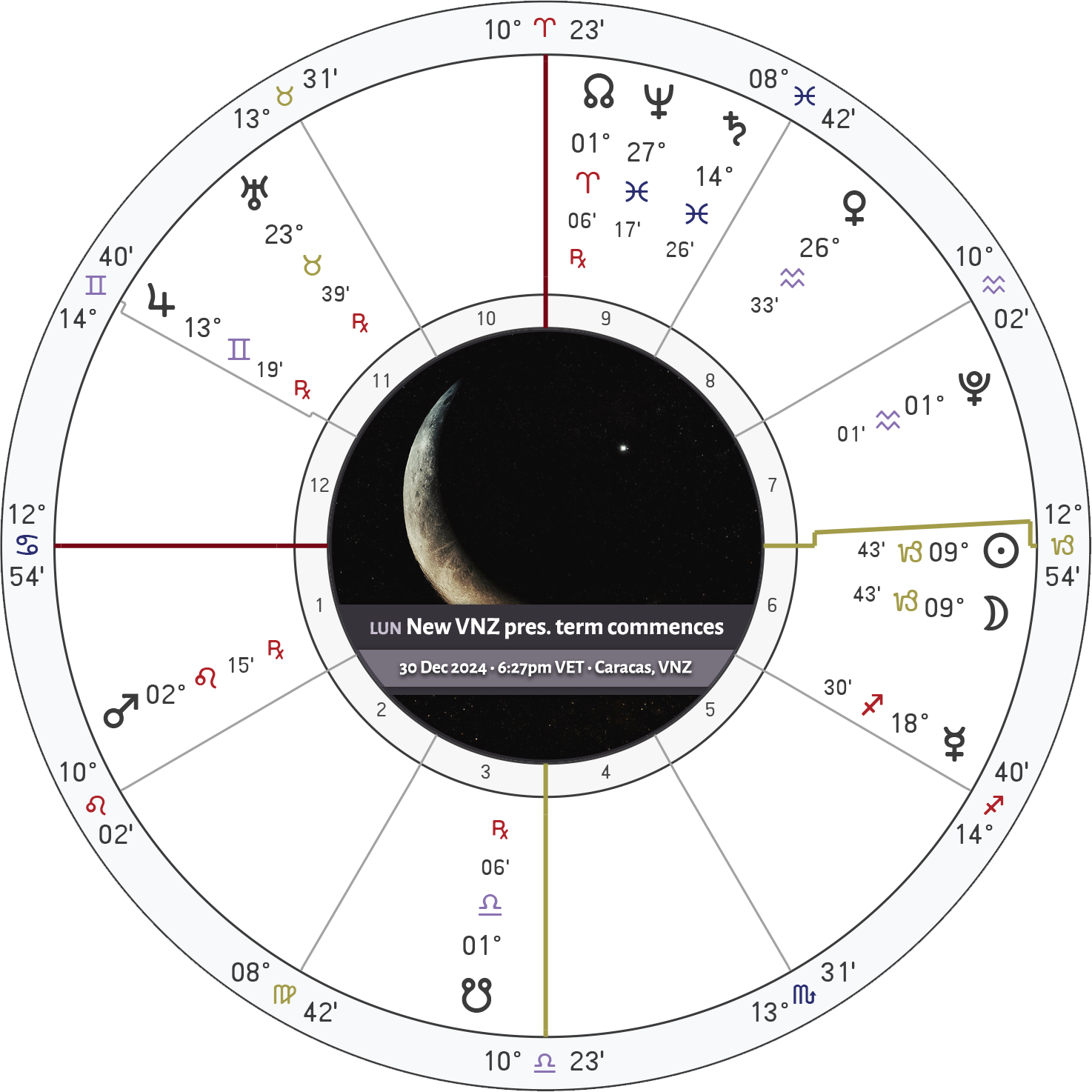
Left: 2024 Aries ingress for Venezuela; Right: lunation preceding the new term as Venezuelan president
The chart on the left is set for the beginning of the astrological year – the Spring Equinox – and centered on Caracas, Venezuela. These charts are called Aries ingress charts, because they mark the Sun's ingress into the sign of Aries. From these charts astrologers are able to identify major themes coming forward for the country or region in review. It is striking to find that the most important degree in the chart, the ascending degree, falls in 5° Sagittarius. This suggests Venezuelan escalation of the Esequiba dispute, as it unites major players in the historical charts. 5° Sagittarius:
- conjoins the Uranus of the 1899 treaty (4° Sagittarius);
- puts the full Moon of the referendum on the Aries ingress horizon, with the referendum's Mars and the Sun on the Aries ingress ascendant and the referendum's Moon on the Aries ingress descendant;
- conjoins Maduro's natal Sun; and,
- pulls in the lunar nodes of the 1966 Geneva Agreement, and Maduro's own natal nodes.
Lunations that carry the signatures of this conflict include those on 25 January, 24 February, 23 May, 6 June, 17 September, 15 December, and 30 December (all 2024).
— Wade Caves 🌒 Astrologer (@wadecaves) December 9, 2023

